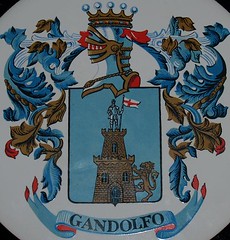RE: 1968 to 2007--Antiwar Student Movements in the US Then & Now
From: The Man Common
Date: Apr 26, 2007 8:56 AM
1968 to 2007--Antiwar Student Movements in the US Then and Now
by Ron JacobsState of Nature
As an email acquaintance and veteran of the
Flashback to Spring 1968
By late April 1968 at
In the minds of the student radicals these issues were not only connected, they shared the same roots. Consequently, those who carried out those policies were equally culpable. That included Grayson Kirk, president of
Confrontation
On April 23, 1968, after a march opposing the gym construction,
It was this attack which convinced much of the student population who had been previously uncommitted to support the radicals in their demands-which had been increased to include a demand that all disciplinary and legal charges be dropped on those involved in the takeover. The radicals' statement that the university would call in the police and beat its own students before it gave up its ties to the military or changed its construction plans were validated. A strike was called and classes became a joke.
Meanwhile in
At
As for the college students themselves, just like the European student leader Daniel Cohn-Bendit said back in 1968: … "the present educational structure ensures that the majority of working-class children are barred not only from the bourgeois society we are trying to overthrow, but also from the intellectual means to see through it." (Obsolete Communism: The Left-Wing Alternative) In an even more fundamental way, these words are true today. What with the rapid increase in the cost of post high-school education, the plummet in the availability and amount of government student aid, the lack of support by those same governments for K-12 public education resulting in the destruction of the educational infrastructure and the continuing "dumbing down" of our children, working class youth are more disenfranchised not only from our educational system, they are removed from society itself. Unfortunately, they also seem to be at a loss as to how to combat that removal. While certain campuses maintain a healthy oppositional culture which expresses itself both socially and politically, many more do not. Working class youth and those youth who have rejected their privilege continue to congregate in the larger cities forming youth "ghettos" and cultures, but at this point on the eve of the millennium, most youth are reduced, like their older counterparts to merely figuring out a way to survive. Unfortunately, many of their elders who have "made it" economically (and who were once part of the generation of 1968) insist on criminalizing (or increasing the penalties for those already illegal) the very same acts they trumpeted when they were young: drug use, open sexuality, opposition to the empire, etc. The acts they have not succeeded in criminalizing (and some of those they have) are commodified, leaving young people feeling cynical even about justifiable acts of rebellion-as they perceive today's revolutionary act to be tomorrow's soft drink commercial.
The
The IDA still exists. It maintains a headquarters in
The Institute for Defense Analyses [IDA]'s board of trustees in 2005 also continued to include members with connections to various
In addition, Feldman writes that MIT faculty members continue to engage in secret war related research for the Pentagon via the IDA.
Most universities and colleges also host recruiters from various military branches and the National Guard. These recruiters, being the most obvious representatives of the war machine, have been met with opposition at some campuses since the war in
Then there are the investment portfolios tied to the endowments of virtually every university. When I worked at the
In addition, there are several grants provided to university departments whose purpose is to enhance the warmaking capabilities of the
Student Resistance Today
There are a number of student organizations opposed to the way things are today. The best known of them are the Campus Antiwar Network, the revived SDS, and local incarnations of the anti-capitalist globalization movement. All of these groups tend to ebb and flow in their membership numbers and those members energy, but do manage to gather for national and regional meetings and to also make their presence known at protests. Indeed, the Student and Youth contingent at the recent antiwar march on January 27th was one of the largest and loudest sections of the march. This winter there have already been a few counter-recruitment actions and college students in the
On February 15th, 2007, dozens of colleges and universities around the
We, the Columbia Coalition against the War, are staging a strike followed by a teach-in on February 15th, 2007. We are inviting the entire
This sentiment is beginning to be heard more and more. As for the actual protest at
Similar numbers were present at the other schools participating in this and other days of protest. What this means more than anything is that the movement against the war on US college campuses is small but committed. Like much of the rest of the



0 Comments:
Post a Comment
<< Home